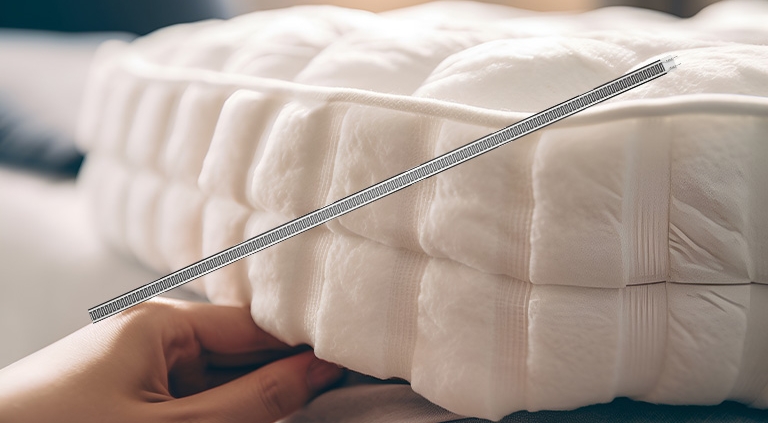With technological advancements, smart home devices are increasingly becoming part of our lives. Among these, smart mattresses play a crucial role in enhancing sleep quality and health monitoring. Thin-film pressure sensors, as the core component of smart mattresses, offer high sensitivity, low cost, and ease of installation, progressively transforming the design and functionality of traditional mattresses.
Working Principle of Thin-Film Pressure Sensors
Thin-film pressure sensors are made of flexible materials, typically comprising two conductive films separated by an insulating layer. When external pressure is applied to the film, the distance between the upper and lower films changes, resulting in a change in resistance. The sensor detects the change in resistance to measure the magnitude and distribution of the pressure.
Advantages of Thin-Film Pressure Sensors in Mattresses
High Sensitivity: Thin-film pressure sensors can accurately detect minor pressure changes, enabling real-time monitoring of pressure distribution on the mattress. This is crucial for analyzing sleep posture, monitoring weight changes, and identifying health issues.
Flexibility and Customizability: The flexible material of thin-film pressure sensors can perfectly conform to the surface of the mattress without compromising comfort. Additionally, the shape and size of the sensors can be customized according to the mattress design to meet various needs.
Low Cost: Compared to traditional pressure sensors, thin-film pressure sensors have lower manufacturing costs, making smart mattresses more affordable and accessible to a broader audience.
Ease of Installation: Thin-film pressure sensors are lightweight and easy to install, either embedded within the mattress or attached to its surface, without requiring complex installation procedures.
Functions and Applications of Smart Mattresses
Sleep Monitoring: With thin-film pressure sensors, smart mattresses can monitor the user’s sleep status in real-time, including sleep onset time, number of turns, and changes in sleep posture. This data helps users understand their sleep quality and provides personalized improvement suggestions.
Health Monitoring: Thin-film pressure sensors can detect abnormal pressure changes, aiding in the identification of potential health issues. For example, prolonged localized high pressure can lead to bedsores. Analyzing sensor data can help adjust posture in time to prevent bedsores.
Intelligent Adjustment: Smart mattresses can automatically adjust their firmness based on pressure sensor data, providing optimal support and comfort. For instance, when the sensor detects side sleeping, the mattress can adjust its firmness to protect spinal health.
Safety Alarms: For the elderly or people with limited mobility, smart mattresses can offer safety alarm functions. When the sensor detects abnormal pressure distribution (such as a fall or prolonged immobility), the mattress can alert family members or caregivers through a mobile app or alarm device.
Future Prospects
With continuous advancements in sensor technology and smart home technology, the application prospects of thin-film pressure sensors in smart mattresses are promising. In the future, the sensitivity and reliability of sensors will further improve, and the integration of data analysis and artificial intelligence will make smart mattresses more intelligent and user-friendly. Additionally, ongoing innovations in sensor technology may expand to more application scenarios, such as combining with other types of sensors to monitor additional physiological parameters like temperature, humidity, and heart rate.
In summary, the application of thin-film pressure sensors has brought revolutionary changes to smart mattresses. These changes not only enhance sleep quality but also provide new methods for health monitoring and management. With continuous technological advancements, smart mattresses will become an essential part of smart homes, offering greater convenience and protection for people’s health and lives.



